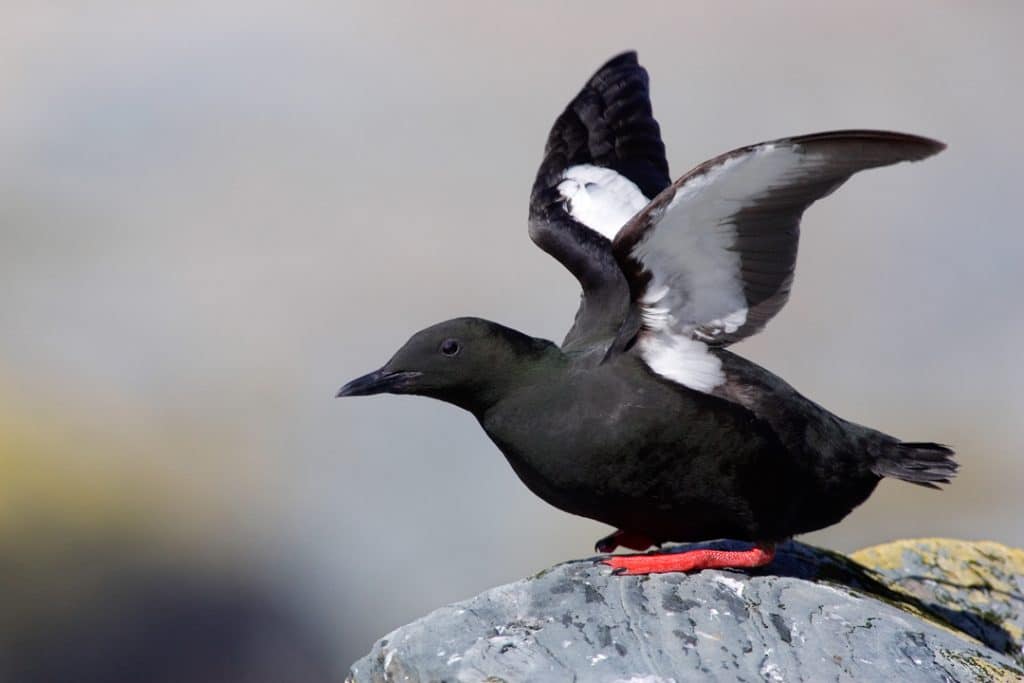In July 1997, a Black Guillemot chick was ringed in Orkney. This bird successfully fledged from its nest and lived for nearly 25 years without being seen again. In May 2022, the bird was recaptured, still in Orkney, making it...
In July 1997, a Black Guillemot chick was ringed in Orkney. This bird successfully fledged from its nest and lived for nearly 25 years without being seen again. In May 2022, the bird was recaptured, still in Orkney, making it the oldest-known Black Guillemot in Britain and Ireland! This is one of the new records – see notes for editors for others – that has just been published in the British Trust for Ornithology’s (BTO) latest ringing and nest recording report, charting the remarkable lives of our birds.

Fitting uniquely numbered rings to chicks in the nest allows scientists to understand exactly how long birds live and to work out how, and potentially why, the numbers that survive change over time. Seabirds like the Amber-listed Black Guillemot can live for a long time but do not produce many young each year. This life history strategy makes their populations particularly vulnerable to periods of increased mortality, such as those caused by Highly Pathogenic Avian Influenza (HPAI), which has had a devastating impact on our seabird and waterbird populations over the past three summers.
Britain and Ireland host the majority of Europe’s breeding seabirds, meaning our breeding colonies are of international importance and HPAI could threaten the global conservation status of some species. More positively, there are indications that some seabirds, such as Gannet, which were especially badly impacted by HPAI in 2022, may be developing immunity to the disease, but more research is needed to confirm how long this immunity might last.
Sightings of ringed birds can be submitted to ring.ac
Dr Dave Leech, head of the British and Irish Ringing Scheme, says: ‘Ringing will play a key role in monitoring HPAI impacts, as it allows conservationists to follow the fortunes of individual birds, each with a slightly different likelihood of encountering the disease. To date, the amazing efforts of volunteer ringers have helped BTO and the Country Agencies to identify those species and colonies that have been impacted worst by the disease and to quantify the increase in mortality rates during the outbreak. Whether HPAI is here to stay or not remains to be seen but, whatever happens, these data will prove vital in terms of managing populations and supporting their recovery.’
The post New records chart remarkable lives appeared first on Fat Birder.


